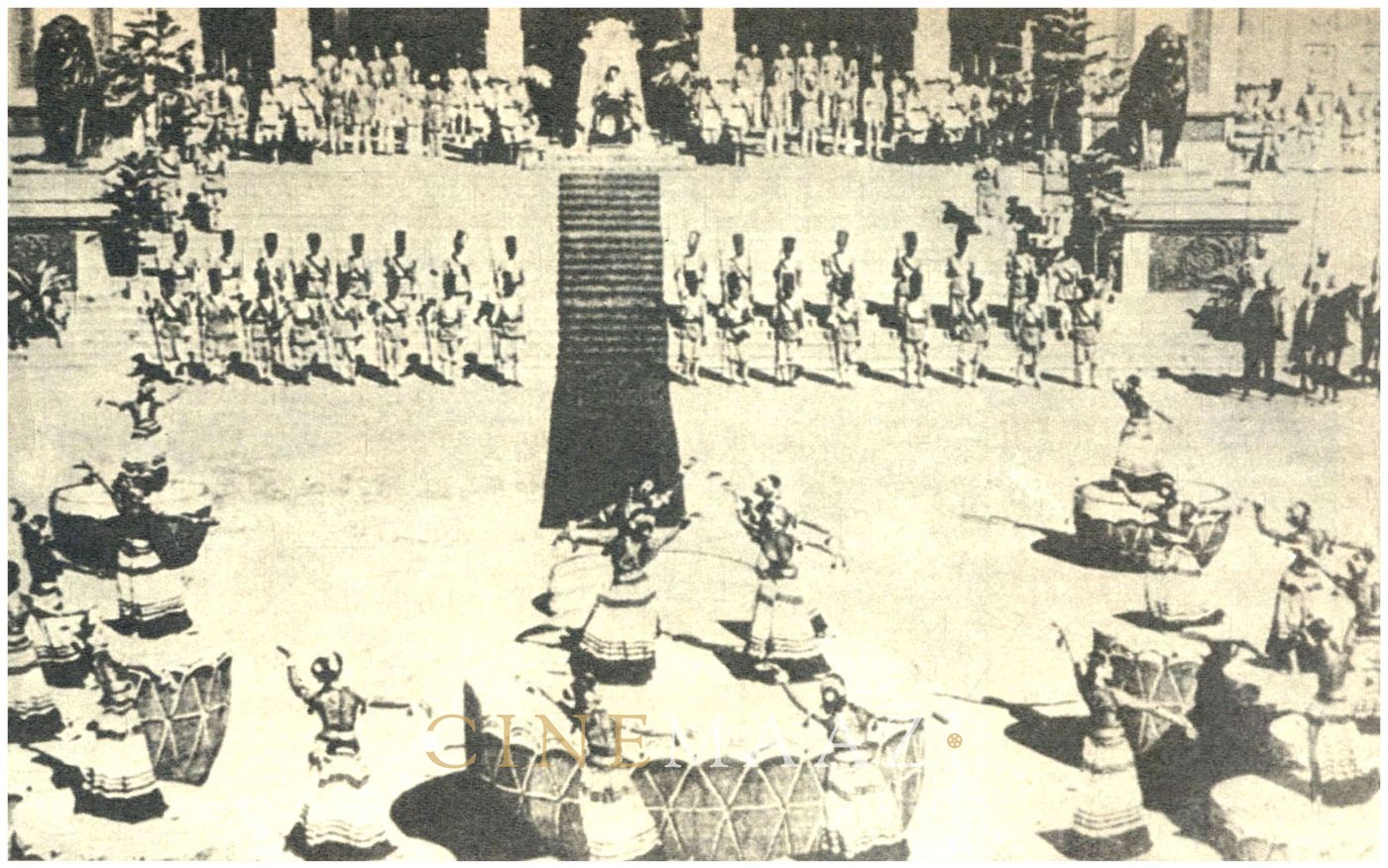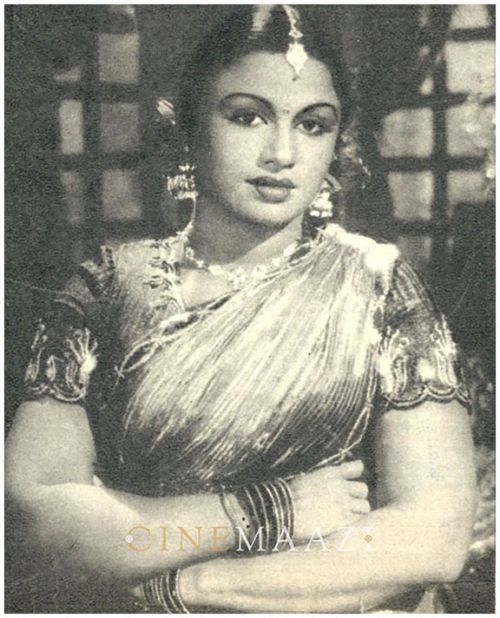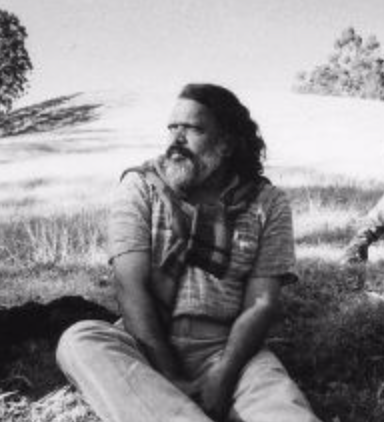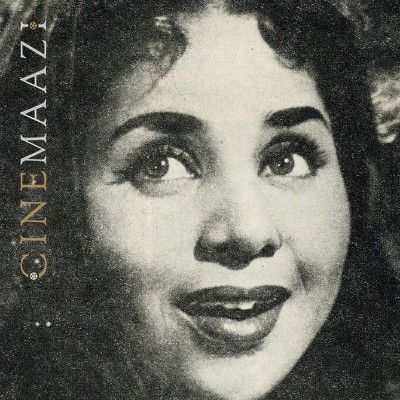The Making of 'Chandralekha' - A View from the Editing Room

When "Chandralekha" - my second film of Gemini - came for editing, all of us in the editing department were required to share the burden of work with Chandru, its editor. An enormous quantity of footage had been shot, Vasan was determined to make "Chandralekha" a record breaker.
The story was simple and direct. A wicked prince Sasanka, usurps the kingdom, throws his father into prison and banishes his elder brother from the state. The elder brother with the help of Chandralekha, his sweetheart, takes back the kingdom frees the king, imprisons Sasanka, and marries Chandralekha. The shooting and the story progressed side by side. Vasan would discuss the story with the members of the story department and move to the studio floor.
The story demanded a medieval fort, with a moat, a drawbridge and all that went with it, besides a circus with lions, tigers, elephants, horses, dancers, clowns, fighters and almost everything else under the sun.
Vasan poured enormous sums of money into the project. And then there was the Drum Dance. Girls and boys were made to dance on vertical drums. Giant sized drums were constructed to hold fighters in their bellies and dancers on the drum skins. While the villain watches the dancers, the drums burst open releasing an army of invaders.
The shooting of this scene went on and on, it threatened to outlast the life of its makers. It was barely possible to move about the studio compound without knocking against the dancers or the fighters who crowded everywhere waiting for the shooting. The female dancers even used the men's rooms. I protested at this transgression. The Chief Executive assured me that there was no violation: they were male dancers in female costume. So their presence in the 'Gentlemen' was perfectly justified.
The long shots of the dance were covered by three cameras simultaneously. Mid and close shots were taken later. Special close shots were taken for the heroine. The real trouble was to maintain the continuity of her waistline. When shooting for the scene started earlier she was thin like a wire - a live wire agile and active. Later she becomes still thinner: she was ill, being involved in a criminal case. After the court case was cleared she began to expand and the expansion continued throughout the film's shooting. Though the same lady had been used throughout the shooting without substitute, many spectators complained that the "double" was a wrong choice.

Eventually when the shooting of the drum dance was completed and drums were rolled out of sight, the front of the old building in which Vasan's office was located looked bare like a football field. I had got used to the sight of those mammoth drums which had been lying there ever since I joined Gemini Studios. Their absence at last permitted a view of the traffic outside on Mount Road. That was the only glimpse of reality one could have from the studio grounds. Otherwise one had a feeling of living in outlandish territory, full of unreal things of doubtful vintage.
The background music, which had been blaring during the shooting of the dances, scenes, now involved the editing room. Though the length of the music was a little less than a reel, the quantity of film exposed for the scene was more than 10,000 ft. I sat glued to the moviola running it forward and backward to achieve synchronization. Chandru cut the scene, cramming the enormous number of shots of the dance into the limited music score.
The climax of the dance was made to coincide with the bursting open of the drums, letting out the invaders. The cutting was done to the beat of the drums so that there was rhythmic change in the flow of shots. As the drum beats became faster the shots changed equally fast. The sluggish movements of the heroine were thus improved in editing.
Hardly was the editing of the drum dance over when circus scenes started flooding the editing room. Film boxes contain ing shots of the trapeze, horses, clowns, elephants, tigers and lions were dumped into every available inch of space. The scene which a tiger and a lion fought in the circus became all important. It demanded several hours of careful editing. It was an unscheduled fight. The lion and tiger met accidentally in the big cage and began to maul each other in deadly combat. The ring master wanted to separate them before they tore each other to pieces. However, Vasan wouldn't hear of it. He just had the camera switched on at once and made a rare movie out of it. He asked Chandru to incorporate the spectacular event in the main reel. Such scenes might entertain children, never mind that the beasts lay maimed and half-dead for months.
As usual the work went on round the clock. Morning, evening and night - it was one continuous stretch. The outside world was dead to us. Years later, the final reels were approved for negative cutting. Once they were finished we would be free. The evenings would be outs. But soon we realised it was only a dream. For Vasan felt that a film was incomplete without a comedian. A popular comedian was hurriedly summoned. It was N S Krishnan. He had just been released after serving this term in prison. He had been found guilty of abetment in the murder of Lakshmi Kanthan, a blackmailing journalist. Krishnan had been indispensable for any Tamil film. But people soon got used to his absence from the movies, after he went to prison.
When he came out of jail, Vasan wanted to be the first to exploit the comedian's return to films, little knowing the N S Krishnan had become an outdated clown by then. Again the feverish work started. The comedy scenes were woven into several reels of "Chandralekha". Some episodes had to be truncated to provide space for Krishnan and Mathuram, his partner.
At last the day arrived when "Chandralekha" was released. For the first time after several months, I saw the evening sun. Nobody at home had seen me for months at that hour. I was received like a war hero. The film's publicity was so far reaching that it percolated even into my uncle's house. My uncle who had always been indifferent to movies, expressed a desire to see it. He wanted me to arrange a show for him. He didn't know my limitations as an assistant editor. My aunt thought that I was famished, little knowing that I was over-fed at Gemini, what I needed was sleep.
When I woke up the next day it was evening. I rushed to the studio after a hurried bath and found the editing department, which had been so active the previous day, deserted and dead. Only Paramasivam, an attendant, was sleeping in his usual corner. Two films cans served as a pillow for his head. For the first few weeks it was difficult to adjust to life without work.

One morning there was unprecedented excitement and jubilation among the staff as I entered the studio. It was over "Chandralekha" box office collections. Telegrams and trunk calls announcing the tremendous success of the film were pouring in. It was not in vain that Vasan had spent so lavishly on the project. Just as he had predicted, "Chandralekha" did break all previous box-office records. Vasan could hardly conceal his excitement and surprise when he talked about its success.
But opinions differed. Simply minded people enjoyed it. They had nothing but admiration for is maker. The snobs declared that Vasan went down in their estimation as a film maker, that "Chandralekha" was fit only for half-wits. The film pundits condemned the film as being puerile and naive. Idealists found no normal in it. The critics were angry that a great film maker like Vasan should have wasted money and time over trash.
Such remarks provoked Vasan to declare that it was wrong to call him an artist. He never claimed to be one. He said that he was a merchant. Instead of selling products like clothes or rice bags he sold films. "Chandralekha" was not made for the intelligentsia, or the ICS officials in Delhi. It was meant purely as entertainment for the unsophisticated labour class and uneducated public. There were too many people telling him to make films that would educate the masses. When this suggestion came from a minister, Vasan was annoyed. He could not resist reminding him that there was a department called the education department of which the minister was in charge and it was supposed to tackle this problem.
The success of "Chandralekha" encouraged Vasan to become more adventurous. There was a sufficient number of alternate shots in the editing department to assemble and edit a dozen "Chandralekhas". Vasan decided to produce a Hindi version out of the unused shots. A print was made out of the new assembly. A duplicate "Chandralekha" was ready within a few days. Tamil words were replaced with their Hindi equivalents.
Nowadays the use of loops helps a lot in dubbing process. When the Hindi version was being produced the dubbing technique was still its infancy. The dubbing was done on one character at a time. To begin with we started substituting dubbed Hindi words for the villain Sasanka's Tamil words. When the reel was projected chaste Hindi words came from Sasanka's mouth, as he demanded the kingdom from his father. His father's words refusing the demand were still in Tamil. The effect was funny.
Nothing could make Krishnan utter Hindi words intelligibly. There was no one who could give a suitable voice in Hindi for him. The voices that were tried produced frightful results. Either they were too gruff or they shrieked. When once we tried synchronising with voices which approximated the comedian's voice, they produced a strange feeling, as through Krishnan's voice came from his belly. Vasan, finally ordered a new comedian from the Hindi screen. We reshot the comedy sequence with Agha.
The Hindi version was even more successful. "Chandralekha" dwarfed the box office collections of all other Hindi films wherever it was released. The film had no popular Hindi star. Ranjan, Radha and Rajakumari were total strangers to anyone outside South India. Seasoned Hindi film producers began to feel uneasy about their future.
Vasan decided to make all his future films in two versions- Hindi and Tamil.
This article was published in Filmfare magazine’s April 1-15, 1982 edition written by R K Ramachandran.
The writer, a former professor of the Film and TV Institute, started his career in the editing department of Gemini Studios.
The images and captions appeared in this feature are from the original article.
About the Author






.jpg)


